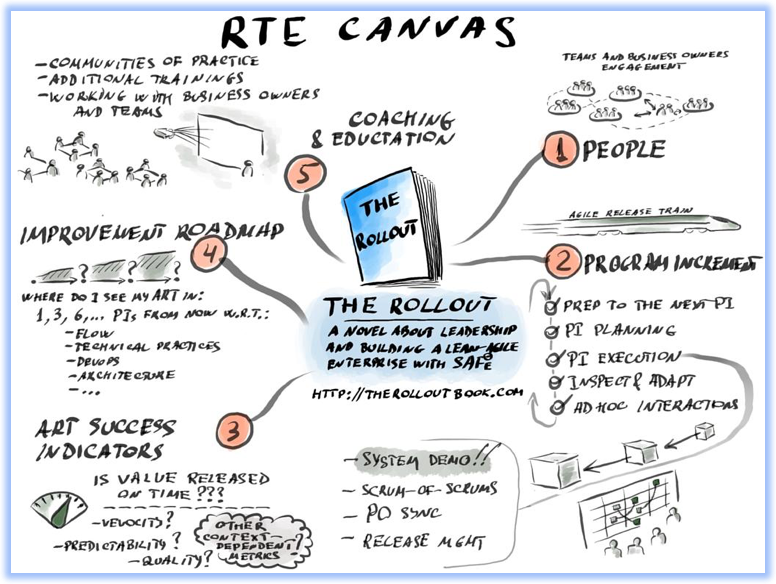I saw a picture tweeted by Alex Yakyma with this picture of the RTE Canvas and it inspired me to talk about this role more.
You can find the tweet here - https://twitter.com/alexyakyma/status/793491699515273216
In the canvas, he highlights five key responsibility areas for the Release Train Engineer. They are:
- People
- Program Increment
- ART Success Indicators
- Improvement Roadmap
- Coaching & Education
I really like the fact that he put the people first. In fact, I’d reorder the responsibilities this way:
- People
- Coaching & Education
- Improvement Roadmap
- Program Increment
- ART Success Indicators
In this case, I’m putting the people-focus stuff (team health, coaching, and retrospective based improvement roadmaps) well out front in the focus of the RTE. I want the RTE to be an organizational coach first. A coach who is focused on guiding and developing the teams within their release train activity.
Then as a secondary focus, they facilitate the Program Increment’s progress and create success metrics for it. This would fall on the dashboard and communication side of things. They would also facilitate “corrective actions” or “PI commitment adjustments” if they are needed.
While the latter two are very important, the first three are what builds and improves their team’s performance. They're also what delivers the PI and drives ART success.
The RTE can be a “trap”
What I find in my real-world travels though is that the RTE role is largely filled with traditional project managers or PMO folks. And their focus is solely (or over 90% focused) on the tracking side of the Program Increment.
Status gathering and communication becomes a majority part of their roles. As does preparing (pre-planning, getting Features ready, negotiating) for the next Program Increment. And what happens is that they “loose their teams” as a result. The teams are agile, but they’re effectively going through the motions without coaching guidance.
If you look under the covers, it’s the RTE who is accountable for results and not their teams. And this is that traditional posture of command-and-control leadership that we know so well.
I don’t think the SAFe folks emphasize it enough that the RTE is a servant-leadership role and that the primary people they serve…are their teams. And not the organizational leaders and managers.
What is a good role model for the RTE?
When folks ask me for a good mental role model for the RTE, I talk about a very seasoned ScrumMaster. One who not only has mastered the role within their team or teams. But one who effectively mentors other ScrumMasters and is good at upward coaching within the organization as too. In other words, they have a broader span of and capacity for influence.
That’s the view I’d like every RTE to have of themselves. One great book to read that focuses on Scrum Mastery is the Geoff Watts book by the same name. I think it should be a well-worn member of every RTE’s bookshelf.
Wrapping Up
If there’s a key point to this article, it’s that the RTE should focus inside or team ward first. And that, in most SAFe organizations, this will feel uncomfortable. As there will be a magnetic attraction to spend most of your time serving outward demands for information.
Don’t give into it. Always remember that the results come from within your TEAMS!
Stay agile my friends,
Bob.
